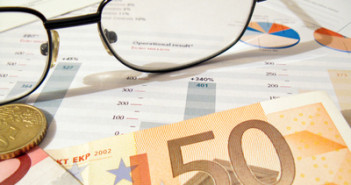EUR/USD is showing little movement in Wednesday trading, as the euro continues to look sharp after gains on Tuesday. In Wednesday’s European session, the pair is trading in the mid-1.37 range. Today’s sole release out of the Eurozone is the German 10-year Bond Auction. It will be a busy day over in the US, with the release of two key events – Building Permits and the Producer Price Index. As well, we’ll get a look at the minutes of the most recent Federal Reserve meeting.
Here is a quick update on the technical situation, indicators, and market sentiment that moves euro/dollar.
EUR/USD Technical
- EUR/USD was steady in the Asian session, touching a high of 1.3773 before edging lower. The pair is unchanged in the European session.
Current range: 1.37 to 1.38
Further levels in both directions:Â Â 
- Below: 1.37, 1.3650, 1.3580, 1.3515, 1.3450, 1.34, 1.3320, 1.3295, 1.3175, 1.31 and 1.3050.
- Above: 1.38, 13915 and 1.40.
- 1.37 is providing support. 1.3650 follows.
- 1.38 is the next line of resistance. 1.3915 is stronger.
EUR/USD Fundamentals
- Tentative –  German 10-year Bond Auction.
- 13:30 US Building Permits. Exp. 0.98M.
- 13:30 US PPI. Exp. 0.2%.
- 13:30 US Core PPI. Exp. 0.2%.
- 13:30 US Housing Starts. Exp. 0.95M.
- 19:00 US FOMC Minutes.
*All times are GMT
For more events and lines, see the Euro to dollar forecast.
EUR/USD Sentiment
- US slide continues: We continue to see weak numbers out of the US. On Tuesday, the culprit was the Empire State Manufacturing Index. The important manufacturing indicator slid to 4.5 points in January, down sharply from 12.5 a month earlier. The estimate stood at 9.9 points. Retail sales fell in both January and December, lowering growth forecasts for both quarters. Meanwhile, the hiccups continue on the employment front, as Unemployment Claims were higher than expected last week. If the markets don’t see some solid numbers soon, the euro could gain more ground.
- Markets eye Fed minutes: The Federal Reserve will release the minutes of its last policy meeting later on Wednesday, and traders should pay attention, as this event has been a market-mover in the past. At the last meeting, the Fed trimmed QE by another $10 billion, reducing the bond-buying scheme to $65 billion each month. Fed chair Janet Yellen has said that QE could be winded up by the end of 2014, provided that the economy behaves and there are no sudden downturns, particularly on the employment front.
- Economic Sentiment releases disappoint: Confidence in the outlooks for the German and Eurozone economies weakened in January. German ZEW Economic Sentiment slid to a three-month low, dropping to 55.7 points in January, compared to 61.7 a month earlier. The estimate stood at 61.3. The Eurozone reading followed suit, dropping from 73.3 to 68.5 points, way off the estimate of 73.9. Although these levels are relatively high, the fact that institutional investors and analysts are less optimistic is a reason for concern, and a slowing down of the German locomotive is the last thing the troubled Eurozone needs.
- ECB official hints at negative rates: The head of the Eurogroup, Dutch finance minister Joeren Dijsselbloem, said that that some say the value is too strong. His words join an ECB member that stated that the central bank is considering negative rates very seriously. These words weighed on the euro, which has since recovered. In addition, the Bank’s monthly bulletin cut inflation forecasts from 1.5% to 1.1% in 2014. ECB President Draghi seemed confident that things will sort themselves out, but another fall in inflation could still trigger a move in March.
- Greek debt relief discussion to be postponed: The Eurogroup is expected to decide on sending the troika delegation to Greece once again, to try and resolve the financing gap. However, a decision about new debt relief will await for late April. In the meantime, Greek PM Samaras stated that his country reached a primary surplus (balance without debt payments) of 1.5 billion euros in 2013. The Eurogroup meeting might result in quite a few headlines.
More:Â another fall in inflation could still trigger a move in March



